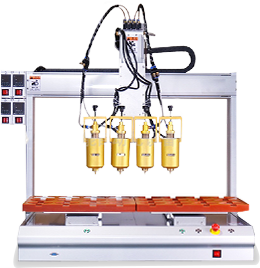

Metal box stamping parts are industrial-grade box products made of high-quality metal sheets (such as carbon steel, stainless steel, aluminum alloy, etc.) through advanced stamping technology. Under the synergy of precision molds and presses, metal sheets are precisely formed into a box shape with regular structure and precise dimensions through processes such as shearing, bending, stretching, and punching. Its internal space is regular and the external contour is smooth. A variety of openings, mounting holes, heat dissipation holes and other structures can be designed according to needs to meet the assembly and functional requirements of different scenarios.
High degree of customization: The size, shape, opening position and number of the box can be flexibly adjusted according to customer needs to adapt to the installation and use requirements of different equipment. At the same time, it supports surface treatment process customization, such as spraying, electroplating, etc., to improve aesthetics and functionality.
Features Dimensions | Specific benefits | Typical application scenarios |
Protection performance | Up to IP67 protection level, dustproof, waterproof and impact-proof | Outdoor communication base stations, equipment for harsh environment operations |
Structural strength | Reinforced rib design, resistant to compression and deformation | Heavy machinery and transportation equipment control box |
Thermal performance | Optimized heat dissipation structure, efficient heat conduction | Server cabinets, power electronics equipment |
Customization | Flexible customization of size, opening and surface treatment | Various non-standard equipment supporting |
Product Details
(I) Processing Technology
The production of metal box stamping parts includes many fine processes. First, the metal sheet is cut into suitable blanks through the blanking process, and then the basic outline of the box is shaped through bending, stretching and other forming processes. Then, punching, flanging and other operations are performed to process functional structures such as mounting holes and heat dissipation holes. During the production process, CNC stamping equipment and automated production lines are used, combined with high-precision molds to ensure that the product size accuracy is controlled within ±0.1mm, so as to achieve efficient and stable mass production.
(II) Applicable materials
. Carbon steel: low cost and high strength, suitable for scenes with requirements for protection and strength but low requirements for corrosion resistance, such as industrial machinery and equipment control boxes.
. Stainless steel: has excellent corrosion resistance and rust resistance, and is often used in the box manufacturing of food processing equipment and medical equipment, as well as box products for long-term outdoor use.
. Aluminum alloy: light weight, good thermal conductivity, moderate strength, has obvious advantages in the application of heat dissipation boxes for electronic equipment and communication equipment, and because of its aesthetics, it is also suitable for products with requirements for appearance.
(III) Quality Inspection
Full-process quality control is adopted. Appearance inspection uses manual visual inspection and machine vision inspection to check whether there are scratches, deformations, and defects on the surface; size inspection uses calipers and three-coordinate measuring instruments to strictly control the key dimensions of the box, such as length, width, height and aperture; performance testing includes waterproof and dustproof testing, pressure resistance testing, salt spray testing (for corrosion resistance requirements), etc., to ensure that all product performances meet the standards and provide customers with reliable industrial box solutions.
 Headquarters tel.
Headquarters tel. E-mail.
E-mail.